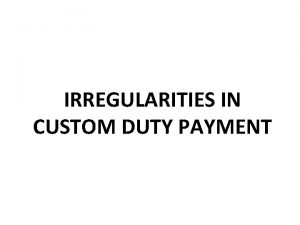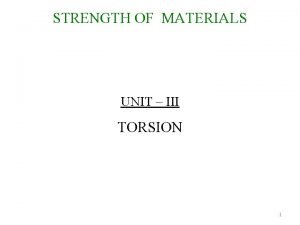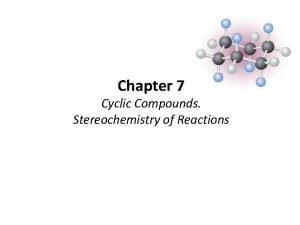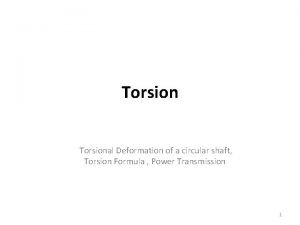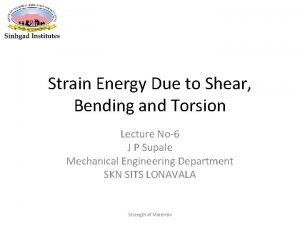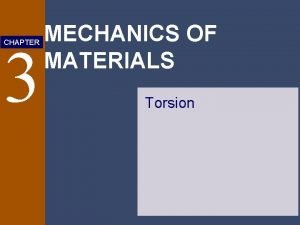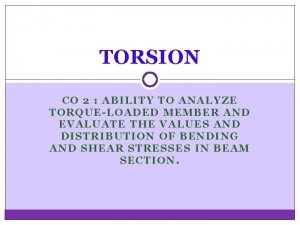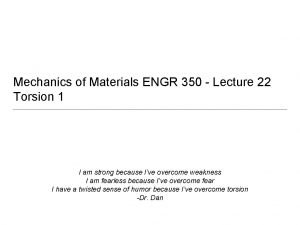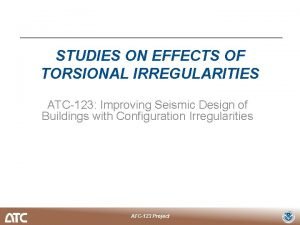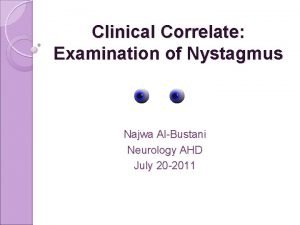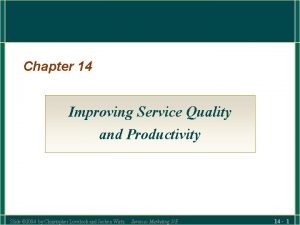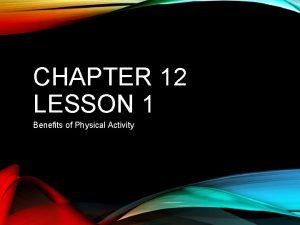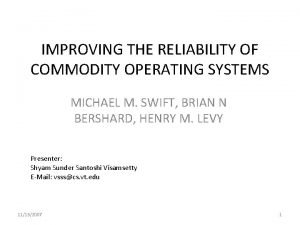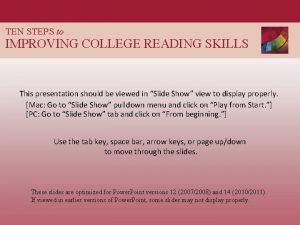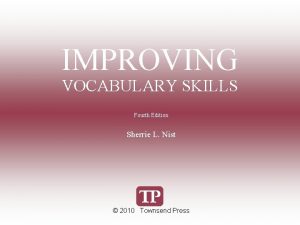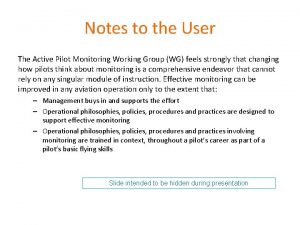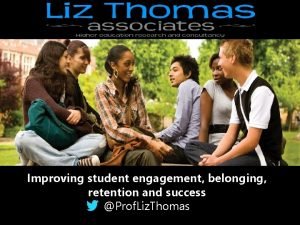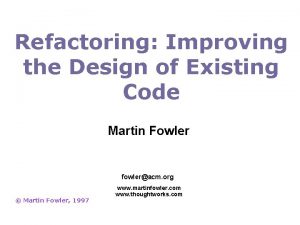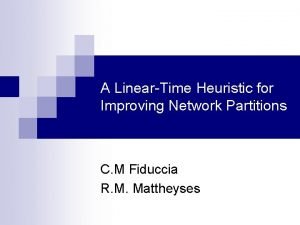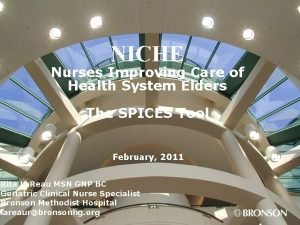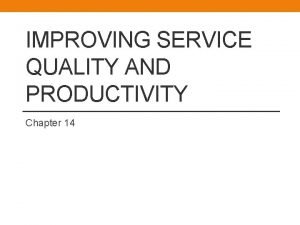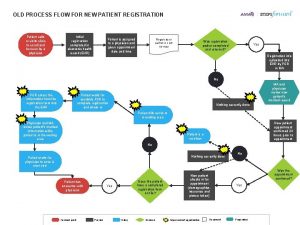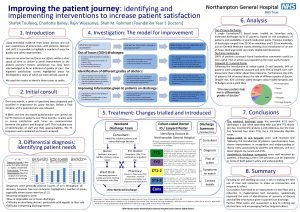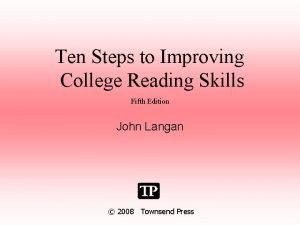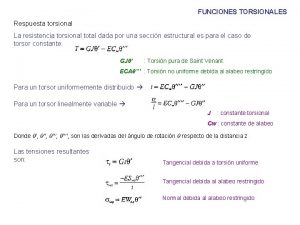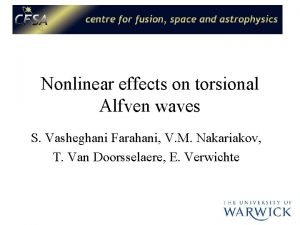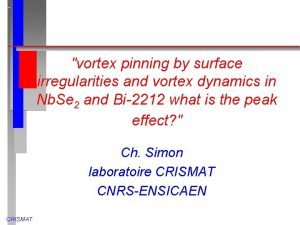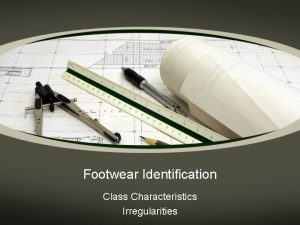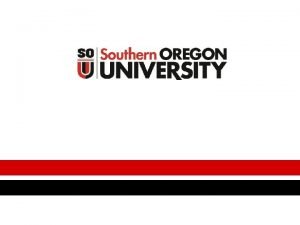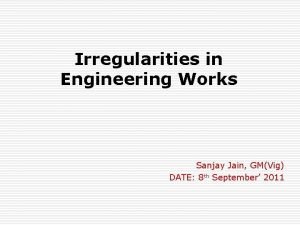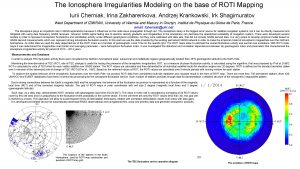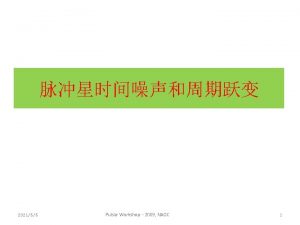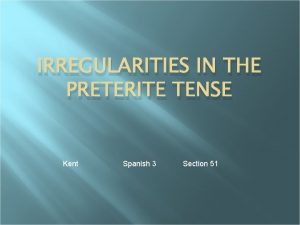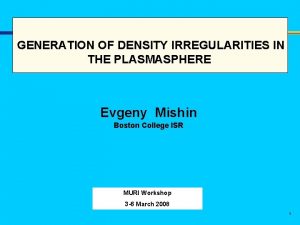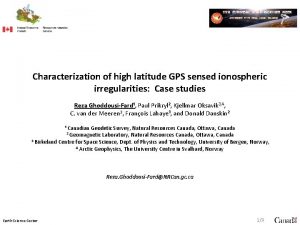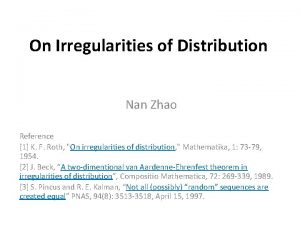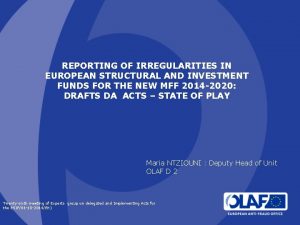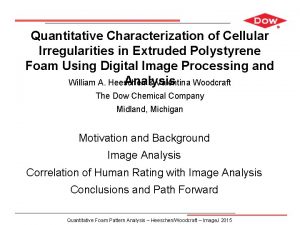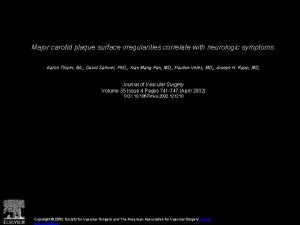STUDIES ON EFFECTS OF TORSIONAL IRREGULARITIES ATC123 Improving


































- Slides: 34

STUDIES ON EFFECTS OF TORSIONAL IRREGULARITIES ATC-123: Improving Seismic Design of Buildings with Configuration Irregularities ATC-123 Project

Motivation § Torsion design requirements are restrictive – Buildings with extreme torsional irregularity are prohibited in SDC E and F – Non-square aspect ratio buildings may be overpenalized – Torsional irregularity is a function relative stiffness only § We have the tools to assess torsion design requirements, so let’s do it! ATC-123 Project

Over-Penalization of Buildings with Non -Square Aspect Ratios b a + CM γ*b Type 1 b Type 1 a Figure after Korolyk and Wagner (2016) ATC-123 Project

Goals § Evaluate current ASCE 7 design provisions for torsionally irregular buildings § Propose improvements/modifications to ASCE 7 torsion design provisions – Greater consistency in performance among torsionally irregular buildings – Eliminate unnecessary sources of conservatism ATC-123 Project

Summary of Findings § Current ASCE 7 provisions are: – Often conservative – Sometimes unconservative § With just a few minor tweaks, we can: – Achieve more consistent performance among torsionally irregular buildings – Eliminate prohibition of extremely torsionally irregular buildings in SDC E and F ATC-123 Project

Methodology § Compare collapse resistance of regular and irregular archetype configurations – Consistent with “Life-safety” goal of ASCE 7 § Archetype design space – ~1800 variants and counting – Torsionally regular (“Baseline”) – Torsionally irregular § Various sources of torsional irregularity § Non-code-conforming, modified-codeconforming ATC-123 Project

Archetype Models: “Baseline” § Baseline building properties – Square plan – Lines of lateral resistance at each edge – *One-story § Two categories 1. “Short”: Cu. Ta = 0. 3 sec 2. “Mid-rise”: Cu. Ta = 2. 0 sec Baseline Plan View * Single-story models for studying torsion have been abused in the past. Great care is taken in this study to avoid the pitfalls of using one-story models inappropriately. ATC-123 Project

Archetype Models: Symmetric § Source of torsional irregularity ü Torsional flexibility “ 1: 1 Sym” “ 2: 1 Sym” “ 4: 1 Sym” ATC-123 Project

Archetype Models: Double Asymmetric § Sources of torsional irregularity ü Torsional flexibility “ 1: 1, Double Asym” ü Eccentricity in both directions “ 2: 1, Double Asym” ATC-123 Project

Archetype Models: Single Asymmetric § Sources of torsional irregularity ü Torsional flexibility “ 1: 1, Single Asym” ü Eccentricity in one direction “ 2: 1, Single Asym” “ 4: 1, Single Asym” ATC-123 Project

Proportioning The Lateral System Method 1: Decoupled Strength and Stiffness 1. Start with a “Baseline” lateral resistance 2. Adjust stiffness (if necessary) to meet drift requirements 3. Adjust strength to exactly match strength requirements 4. Adjust strength and/or stiffness to meet stability requirements Method 2: Coupled Strength and Stiffness 1. Start with a “Baseline” lateral resistance 2. Scale strength and stiffness by exactly the same amount until design requirements are met. ATC-123 Project

3 D Nonlinear Modeling Approach § CM at center of plan § P-Δ columns one radius of gyration from CM – Offset 5% for symmetric buildings Nonlinear Lateral Shear Spring ATC-123 Project

Assess Collapse Resistance with Incremental Dynamic Analysis (IDA) § FEMA far-field ground motion set – 22 ground motion pairs – Apply both horizontal components simultaneously – Repeat IDA with components rotated 90° (44 IDAs total) Example IDA plot for one of the “Short” archetypes with minimal eccentricity. ATC-123 Project

Results: What if we Ignore Torsion Altogether? § “Short” Archetypes ATC-123 Project

Results: What if we Ignore Torsion Altogether? § “Mid-rise” Archetypes ATC-123 Project

What if We do not Perform Drift/Stability Checks at the Building Edge and ρ = 1. 0? ATC-123 Project

Results: Use ASCE 7 Design Provisions § “Short” archetypes, coupled is dashed ATC-123 Project

Results: Use ASCE 7 Design Provisions § “Mid-rise” archetypes with P-θ modeling conservatism removed, dashed lines are for coupled strength and stiffness ATC-123 Project

Possible (Minimum) Torsion Provisions Torsional irregularity classification Criteria Add Requirements Remove Requirements TIR > 1. 2 -100%-30% ortho load combo for strength NA Type 1 b. Extreme torsional irregularity TIR > 1. 4 -100%-30% ortho load combo for strength -ρ = 1. 3 -Prohibit SDC E and F -Prohibit ELF Take care of with Code Text Meets one or both of the following: -TIR > 1. 4 in both ortho directions -Lines of lateral resistance all on same side of CM -ρ = 1. 3 NA Type 1 a. Torsional irregularity ATC-123 Project

Results For Proposed Torsion Provisions § “Short” archetypes, dashed lines are coupled – Apply ρ only in direction that triggers it ATC-123 Project

Results For Proposed Torsion Provisions § “Mid-rise” archetypes with P-θ modeling conservatism removed, dashed lines are for coupled strength and stiffness ATC-123 Project

Additional Studies to Verify the Conclusions and Recommendations § Mixed systems: 7: 3 aspect ratio – 8 -story RC shear wall building with moment frame on one side (Layouts by Mike V. ) § Three wall systems: Same layouts as the RC walls in the mixed system, but with the frame removed. ATC-123 Project

Mixed System Layouts § Set 1: “Symmetric” layouts ATC-123 Project

Mixed System Layouts § Set 2: “Asym A” layouts ATC-123 Project

Mixed System Layouts § Set 3: “Asym B” layouts ATC-123 Project

3 -wall, “Short” § Originally proposed minimum req’s Not defined as irregular! ATC-123 Project

3 -wall, “Mid-rise” § Originally proposed minimum req’s Not defined as irregular! ATC-123 Project

Mixed System Designs Not defined as irregular! Note: I used R = 7 for dual system direction, but the MF is actually not quite strong enough to qualify for that ATC-123 Project

Problems Identified 1. Some “torsionally regular” buildings perform poorly – – Reason: Significant inherent torsion resisted by orthogonal walls Solution 1: Require accidental torsion in orthogonal direction § – This is an indirect solution Solution 2: Require 100%-30% ortho load combo § – This solution addresses the actual problem (i. e. ortho loads are not actually decoupled when there is inherent eccentricity) Proposed solution by Valley: Classify as irregular if >75% of strength on same side of CM § This would trigger the 100%-30% ortho load combo that we propose for irregular buildings ATC-123 Project

Possible (Minimum) Torsion Provisions Torsional irregularity classification Type 1 a. Torsional irregularity Criteria Add Requirements TIR > 1. 2, or >75% of lateral -100%-30% ortho story strength on one side load combo for of CM strength Type 1 b. Extreme torsional irregularity TIR > 1. 4 -100%-30% ortho load combo for strength Take care of with Code Text Meets one or both of the following: -TIR > 1. 4 in both ortho directions -Lines of lateral resistance all on same side of CM -ρ = 1. 3 ATC-123 Project Remove Requirements NA -ρ = 1. 3 -Prohibit SDC E and F -Prohibit ELF NA

3 -wall, “Short” § 100%-30% ortho combo if >75% of resistance on same side of CM (even if “regular”) ATC-123 Project

3 -wall, “Mid-rise” § 100%-30% ortho combo if >75% of resistance on same side of CM (even if “regular”) ATC-123 Project

Mixed § 100%-30% ortho combo if >75% of resistance on same side of CM (even if “regular”) Note: I used R = 7 for dual system direction, but the MF is actually not quite strong enough to qualify for that. ATC-123 Project

Mixed § Classify as irregular if >75% of strength on same side of CM Note: I made the frames just strong enough to not be classified as irregular under the rule proposed rule, i. e. exactly 75% of the strength is on one side of CM ATC-123 Project
 Irregularities in the performance of duty
Irregularities in the performance of duty Japan population pyramid
Japan population pyramid Paradigm shift from women studies to gender studies
Paradigm shift from women studies to gender studies Torsion formula
Torsion formula ..
.. Shaft torsion formula
Shaft torsion formula Strain energy stored due to bending formula
Strain energy stored due to bending formula Torsion mechanics of materials
Torsion mechanics of materials Torque on shaft formula
Torque on shaft formula What is a cantilever snap joint
What is a cantilever snap joint Torsion mechanics
Torsion mechanics Torsional
Torsional Rotational nystagmus
Rotational nystagmus Improving service quality and productivity ppt
Improving service quality and productivity ppt Chapter 12 lesson 1 benefits of physical activity
Chapter 12 lesson 1 benefits of physical activity Nist cybersecurity framework roadmap
Nist cybersecurity framework roadmap Improving student learning one teacher at a time
Improving student learning one teacher at a time What is the use of pi
What is the use of pi Improving the reliability of commodity operating systems
Improving the reliability of commodity operating systems Ten steps to improving college reading
Ten steps to improving college reading Gaps model for improving service quality
Gaps model for improving service quality Improving chronic illness care model
Improving chronic illness care model Improving software economics set 1
Improving software economics set 1 Improving vocabulary with word parts and context clues
Improving vocabulary with word parts and context clues Empire 8284
Empire 8284 A sense of belonging improving student retention
A sense of belonging improving student retention Refactoring improving the design of existing code
Refactoring improving the design of existing code A linear-time heuristic for improving network partitions
A linear-time heuristic for improving network partitions Nurses improving care for healthsystem elders
Nurses improving care for healthsystem elders Decreasing turnover time operating room
Decreasing turnover time operating room Gaps model for improving service quality
Gaps model for improving service quality Hr tiered service delivery model
Hr tiered service delivery model New patient registration process
New patient registration process Improving the patient journey
Improving the patient journey Ten steps to advancing college reading skills
Ten steps to advancing college reading skills
